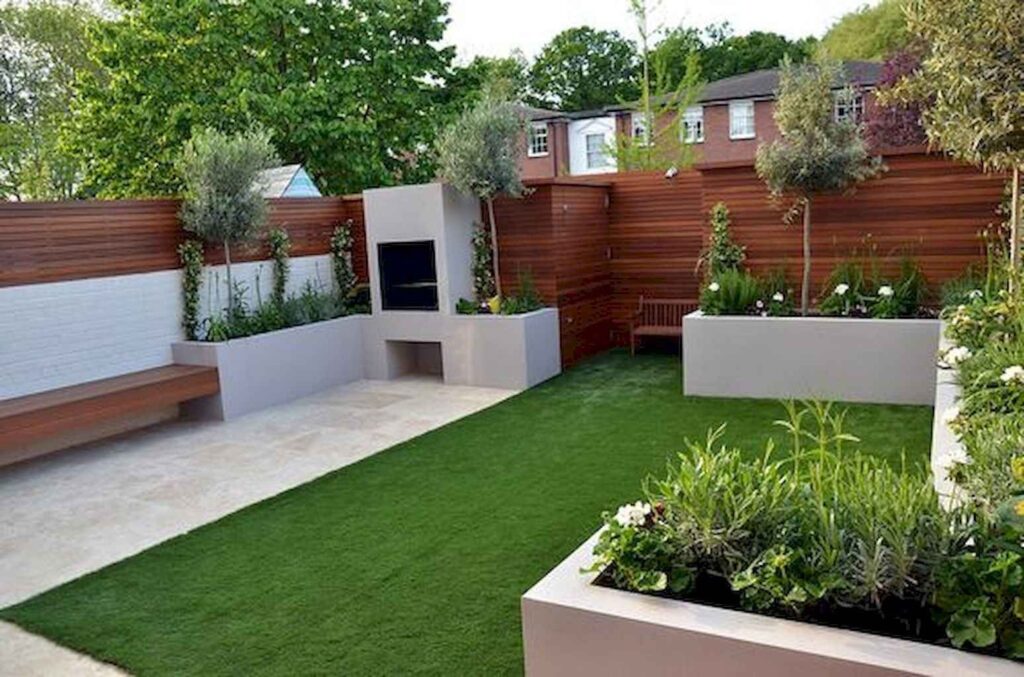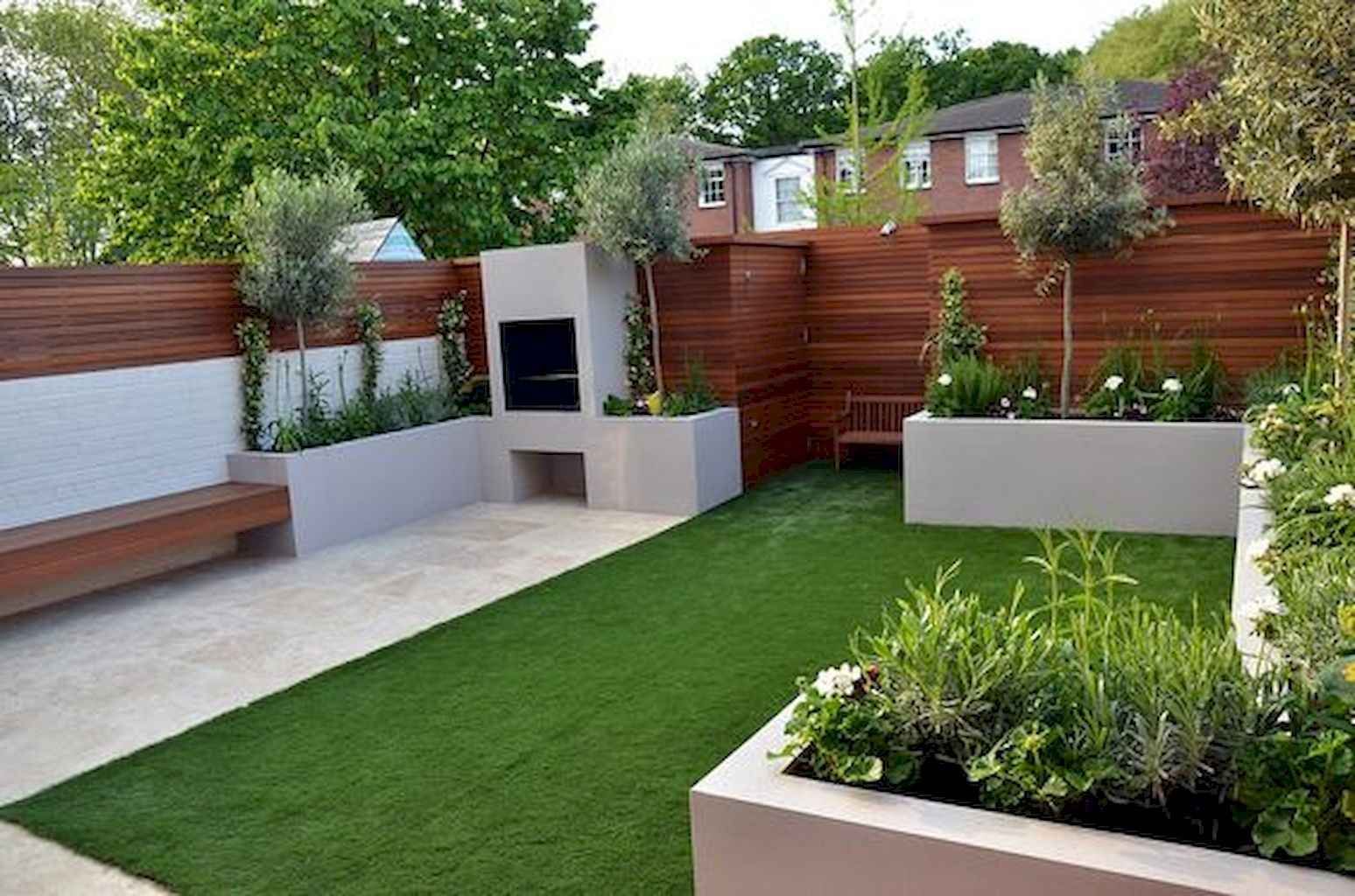
Modern Landscape Design: Shaping Outdoor Spaces for Contemporary Living
In the realm of architectural and environmental aesthetics, modern landscape design stands out as a powerful force, transforming ordinary outdoor spaces into stunning extensions of contemporary living. It’s more than just arranging plants and stones; it’s about creating functional, visually appealing environments that complement modern architecture and lifestyle. This article explores the core principles, emerging trends, and essential elements that define modern landscape design, offering insights for homeowners, designers, and anyone seeking to elevate their outdoor spaces.
The Essence of Modern Landscape Design
Modern landscape design is characterized by its clean lines, minimalist approach, and emphasis on functionality. Unlike traditional landscaping styles that often feature ornate details and elaborate plantings, modern designs prioritize simplicity, sustainability, and a seamless integration with the surrounding environment. The core principles include:
- Simplicity and Minimalism: Less is often more in modern landscape design. The focus is on creating uncluttered spaces with a limited palette of materials and plants.
- Clean Lines and Geometric Shapes: Straight lines, geometric forms, and well-defined edges are hallmarks of this style. These elements contribute to a sense of order and visual appeal.
- Functionality: Modern landscape design prioritizes usability. Outdoor spaces are designed to serve specific purposes, such as entertaining, relaxing, or outdoor cooking.
- Sustainability: Environmentally conscious practices are integral to modern design. This includes using native plants, conserving water, and minimizing the use of chemicals.
- Integration with Architecture: The landscape should complement and enhance the architectural style of the home, creating a cohesive and harmonious overall design.
Key Elements of Modern Landscape Design
Several key elements contribute to the success of a modern landscape design:
Hardscaping
Hardscaping refers to the non-living elements of the landscape, such as:
- Patios and Decks: These provide functional outdoor living spaces and are often constructed from materials like concrete, wood, or composite decking.
- Walkways and Pathways: Defined pathways create a sense of order and guide movement through the landscape. Materials like pavers, gravel, or stepping stones are commonly used.
- Walls and Fences: These can define boundaries, provide privacy, and add visual interest. Modern designs often feature sleek, minimalist walls made from concrete, stone, or metal.
- Water Features: Incorporating water features like fountains, ponds, or reflecting pools can add a sense of tranquility and sophistication.
- Fire Pits and Outdoor Kitchens: These elements enhance the functionality of the outdoor space, creating areas for cooking, dining, and socializing.
Softscaping
Softscaping refers to the living elements of the landscape, such as plants, trees, and shrubs. In modern landscape design, softscaping is often used to create visual contrast and texture.
- Plant Selection: Native plants are often favored for their sustainability and adaptability. Ornamental grasses, succulents, and drought-tolerant perennials are also popular choices.
- Mass Plantings: Grouping plants together in large masses creates a bold visual impact and simplifies maintenance.
- Green Walls: Vertical gardens or green walls can add a touch of greenery to small spaces and create a focal point.
- Trees: Strategically placed trees can provide shade, privacy, and visual interest. Deciduous trees can offer seasonal color changes, while evergreen trees provide year-round greenery.
Lighting
Effective lighting is crucial for enhancing the ambiance and functionality of a modern landscape design. Consider:
- Path Lighting: Illuminating walkways and pathways ensures safety and creates a welcoming atmosphere.
- Uplighting: Highlighting trees, shrubs, or architectural features with uplighting adds drama and visual interest.
- Ambient Lighting: Soft, diffused lighting can create a relaxing and inviting atmosphere for outdoor living spaces.
- Smart Lighting Systems: These allow for automated control and customization of lighting schemes, enhancing energy efficiency and convenience.
Emerging Trends in Modern Landscape Design
The field of modern landscape design is constantly evolving, with new trends emerging to meet the changing needs and preferences of homeowners. Some of the most notable trends include:
- Sustainability: As environmental awareness grows, sustainable practices are becoming increasingly important. This includes using native plants, conserving water, and minimizing the use of chemicals. [See also: Sustainable Garden Design Ideas]
- Outdoor Living Spaces: The trend of extending living spaces outdoors continues to gain popularity. Outdoor kitchens, living rooms, and dining areas are becoming increasingly common.
- Low-Maintenance Landscapes: Homeowners are seeking landscapes that require minimal upkeep. This has led to an increased interest in drought-tolerant plants, gravel gardens, and automated irrigation systems.
- Smart Technology: Smart technology is being integrated into landscapes to automate tasks such as irrigation, lighting, and security.
- Biophilic Design: This design philosophy emphasizes the connection between humans and nature. It involves incorporating natural elements into the landscape to promote well-being and reduce stress.
Designing Your Own Modern Landscape
Creating a modern landscape design can be a rewarding experience. Here are some tips to guide you through the process:
- Define Your Goals: Determine how you want to use your outdoor space. Do you want a space for entertaining, relaxing, or gardening?
- Assess Your Site: Consider the existing conditions of your site, including soil type, sun exposure, and drainage.
- Create a Plan: Develop a detailed plan that includes hardscaping, softscaping, and lighting elements.
- Choose Your Materials: Select materials that are durable, sustainable, and visually appealing.
- Install Your Landscape: You can either hire a professional landscaper or tackle the project yourself.
- Maintain Your Landscape: Regular maintenance is essential for keeping your landscape looking its best. This includes watering, weeding, pruning, and fertilizing.
The Benefits of Modern Landscape Design
Investing in modern landscape design offers numerous benefits:
- Increased Property Value: A well-designed landscape can significantly increase the value of your home.
- Enhanced Curb Appeal: A beautiful landscape can make your home more attractive to potential buyers.
- Improved Quality of Life: Outdoor spaces can provide a place to relax, entertain, and connect with nature.
- Environmental Benefits: Sustainable landscapes can conserve water, reduce pollution, and support local ecosystems.
- Energy Efficiency: Strategically placed trees and shrubs can provide shade and reduce energy consumption.
Examples of Stunning Modern Landscape Designs
To inspire your own modern landscape design, consider these examples:
- Minimalist Courtyard: A small courtyard featuring clean lines, geometric pavers, and a single sculptural tree.
- Urban Oasis: A rooftop garden with a green wall, comfortable seating, and a water feature.
- Desert Landscape: A drought-tolerant landscape with succulents, cacti, and gravel pathways.
- Coastal Retreat: A seaside garden with native plants, driftwood accents, and panoramic views.
- Contemporary Estate: A sprawling landscape with a pool, outdoor kitchen, and meticulously manicured lawns.
Conclusion
Modern landscape design is a dynamic and evolving field that offers endless possibilities for creating stunning and functional outdoor spaces. By embracing the principles of simplicity, sustainability, and integration with architecture, you can transform your yard into a contemporary oasis that enhances your lifestyle and adds value to your property. Whether you’re looking to create a minimalist courtyard or a sprawling estate, the key is to carefully plan and execute your design, paying attention to every detail. Embrace the elements of modern landscape design and create an outdoor space that reflects your personal style and enhances your overall well-being. Consider consulting with a professional landscape designer to bring your vision to life. The possibilities for creating a beautiful and functional modern landscape design are truly limitless. With careful planning and execution, you can transform your outdoor space into a contemporary oasis that enhances your lifestyle and adds value to your property. Remember to prioritize sustainability, functionality, and aesthetics to create a landscape that is both beautiful and environmentally responsible. Embrace the principles of modern landscape design and create an outdoor space that you will enjoy for years to come.

